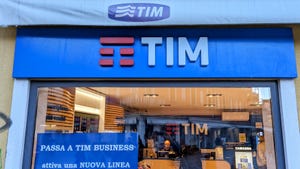Broadband Infovision Awards: Best Broadband Access Award (Wireless)
With just five weeks to go until the winners of this year's Broadband InfoVision Awards are announced, we preview the shortlisted entries for the category Best Broadband Access (Wireless).
September 19, 2012

 With just five weeks to go until the winners of this year’s Broadband InfoVision Awards are announced, we preview the shortlisted entries for the category Best Broadband Access (Wireless).
With just five weeks to go until the winners of this year’s Broadband InfoVision Awards are announced, we preview the shortlisted entries for the category Best Broadband Access (Wireless).
This award recognises an excellent product or innovation in the area of Wireless Access Networks by a telecom solutions vendor or a broadband operator/service provider, launched between July 2011 and June 2012 which offered significant new prospects for increased revenue, managing costs, improving quality or increasing customer satisfaction.
US firm ADTRAN has been nominated for this award for its Mobile Data Offload solution, touted as the world’s first cloud-based solution for carriers looking to utilise the efficiencies and benefits of data offloading. The ADTRAN virtual wireless LAN separates the control and data planes of the Wi-Fi network, allowing control to be leveraged from a central point of the network such as a data centre or Network Operations Centre (NOC), giving extreme scalability to Wi-Fi networks.
Based on the soon-to-be-ratified Wi-Fi Alliance’s Hotspot 2.0 standard, this new approach is enabled by combining advanced virtual wireless LAN (vWLAN) capabilities into a seamless mobile backhaul solution for a highly available, scalable solution capable of integrating into any network topology. ADTRAN’s solution also addresses each area of network congestion for the carrier – cellular backhaul, Radio Access Network and enterprise access – and provides the means to eliminate the log jam created by the rapid rise in mobile data traffic.
Alcatel-Lucent has again reached the shortlist for solutions from its lightRadio portfolio (winner of last year’s Wireless award). This year’s nominated entry is Metro Cell Express, a turnkey suite of services developed and offered specifically for metro cells, which sees Alcatel-Lucent plan, design, install, integrate and test a metro cell network, then transfer operations back to the operator.
At the heart of lightRadio Metro Cell Express is Alcatel-Lucent’s proven lightRadio technology, featuring the 9764 Metro Cell Outdoor and 9768 Metro Radio Outdoor products. In combination with the services provided, it forms a complete metro solution designed to bring more metro cells on-line in significantly less time than standard competitive processes.
US chip firm Freescale Semiconductor has been nominated for its QorIQ Qonverge B4860 system-on-a-chip (SoC). As a member of the QorIQ Qonverge platform family, the B4860 solution supports complete baseband processing for a Macro base station with smart partitioning between L1, L2 and Transport layers handling the whole digital baseband processing from antenna IQ samples to IP backhaul.
It supports Multi-RAT and Multimode (LTE-A, LTE and 3G/UMTS) standards and is ready for future LTE-Advanced deployments. The multicore SoC includes ten very high performance programmable cores; four 64-bit Dual-thread Power Architecture cores and six cores based on a Starcore flexible vector processor (FVP) and high throughput, low latency hardware accelerators to enable highly optimised processing for the radio processing chain, from PHY to transport layers.
Chinese vendor Huawei Technologies has made the cut for its AtomCell small cell solution, which encompasses all of Huawei’s small cell products, including Micro, Pico, ePico, Femto and WiFi small cells. The AtomCell is also multi-mode, supporting all wireless technical standards as well as traditional network architecture and Femto network structures.
At the core of the AtomCell is the Atom, which provides for the AtomCell’s power amplifier, radio frequency and baseband functionality. A multitude of different products can be assembled using this component and a suitable antenna module. The AtomCell is also claimed to be the world’s first micro base station to support user-targeting beamforming.
Californian firm SpiderCloud Wireless has been shortlisted for its SpiderCloud solution, designed to enhance indoor coverage for firms that require greater 3G capacity in large office buildings in a simple and affordable way. SpiderCloud’s Self-Organising Network (SON) technology, and its use of existing Ethernet infrastructure, ensures that SpiderCloud’s system can be installed in a large building within days rather than weeks or months.
SpiderCloud’s small-cell system consists of two elements – the SpiderCloud Radio Node (SCRN) and the SpiderCloud Services Node (SCSN). Each SpiderCloud Radio Node is a small, wall or ceiling-mountable 3G base station. A wireless operator then installs radio nodes to provide coverage and capacity inside a building. All radio nodes in a building connect to an on-premise SpiderCloud Services Node, which securely connects to the operator’s core network.
UK company Ubiquisys, a developer of 3G and LTE small cells, and renowned chip maker Intel have been jointly shortlisted for their Smart Cell devices, a new category of hybrid device based on Intel architecture developed by Ubiquisys designed to overcome the difficulty of overloaded commodity backhaul by providing massive amounts of local processing power and storage at the edge of the network.
Smart cells combine a cellular/WiFi small cell with an integrated, communications-tuned computing platform with local storage, and the two companies have already met a number of key milestones, including prototype demonstrations with live applications from third party developers. In the final demonstration before operator trials begin, smart cells will be shown at Small Cells World Summit running live on a UK operator’s network.
Finally, Chinese firm ZTE has been shortlisted for its 4T4R LTE-A base station, designed to enable seamless evolution from 2G to 4G, deal with various multi-mode combinations (e.g. GSM/UMTS/CDMA/LTE), accommodate carrier aggregation, continuous or non-continuous in both intra-band and inter-band, and overcome limited space on-site.
The base station can also combine different modes in one box, which means it has four antennas and two power amplifiers (PAs): one PA is used to support single mode or dual modes, and another can be used to support different modes. With its carrier aggregation element, ZXSDR R8884 can meet LTE-A (LTE Advanced) requirements without hardware changes and is billed as the first LTE-A commercial base station in the world.
For more information on this year Broadband InfoVision Awards and to register, please visit http://www.broadbandworldforum.com/awards/about-the-awards/
About the Author
You May Also Like










.png?width=300&auto=webp&quality=80&disable=upscale)


_1.jpg?width=300&auto=webp&quality=80&disable=upscale)